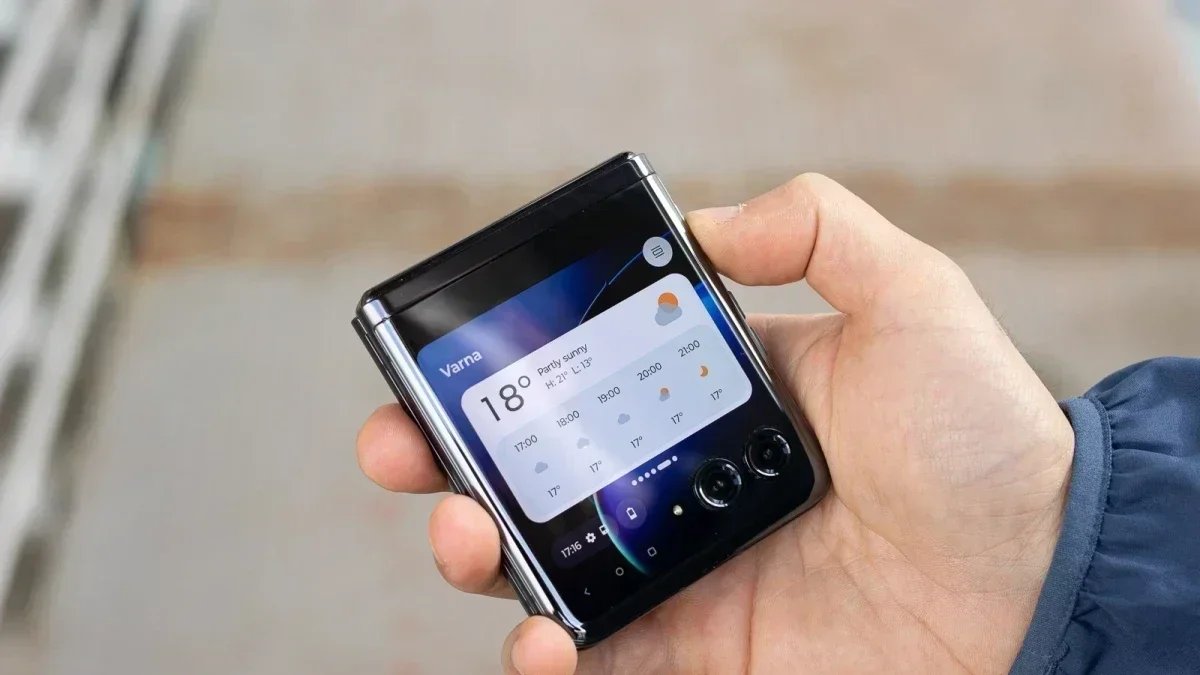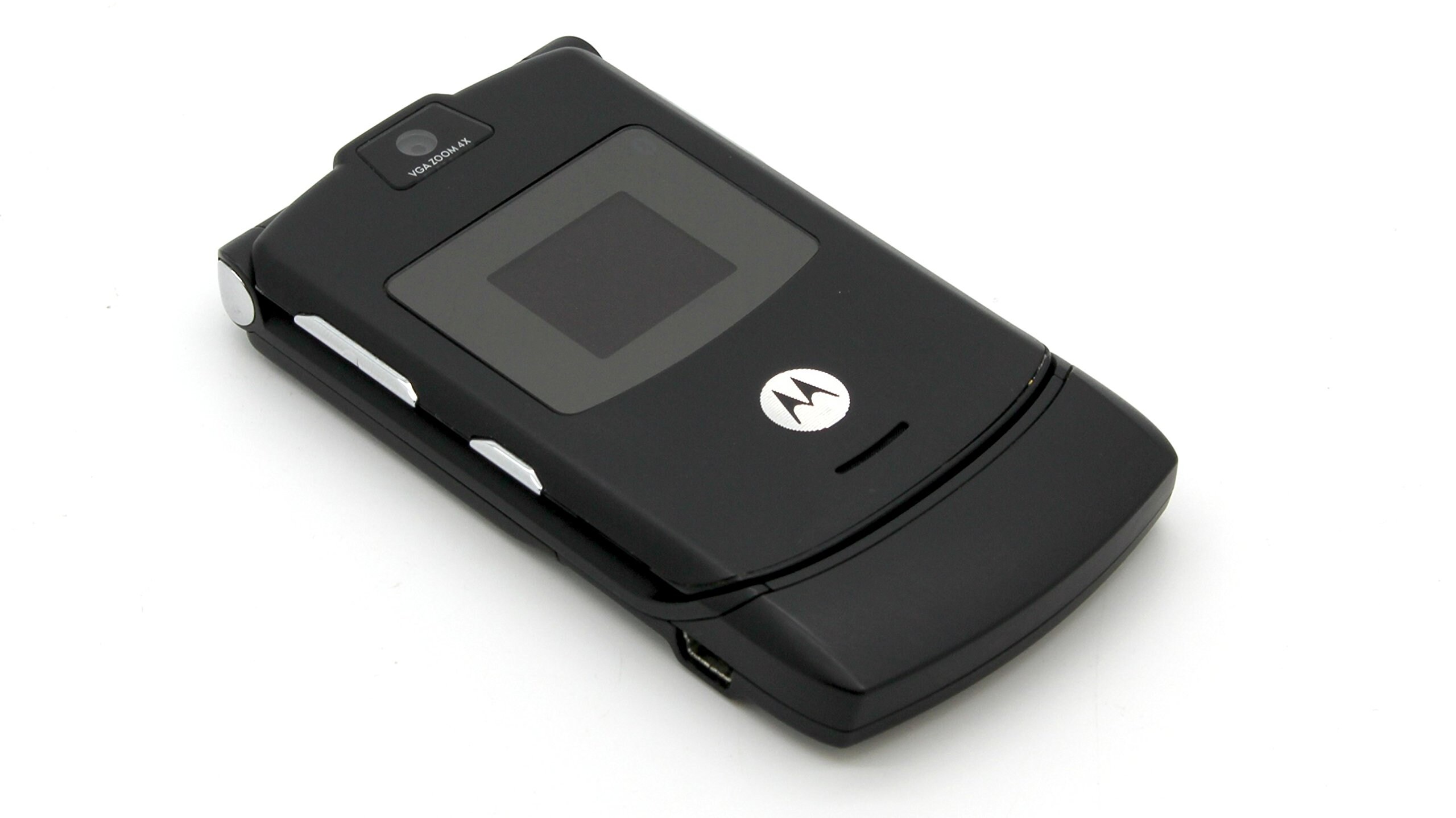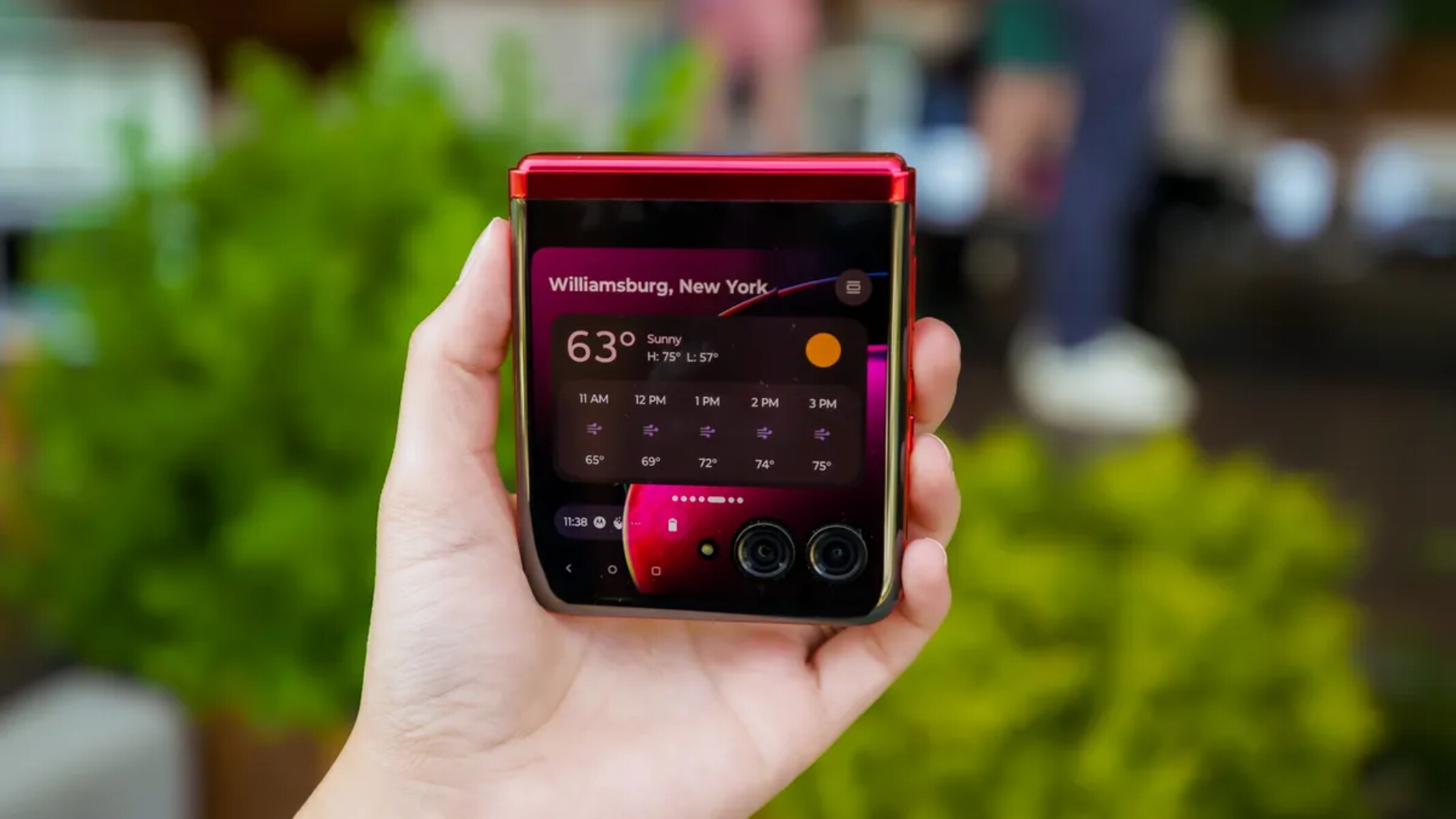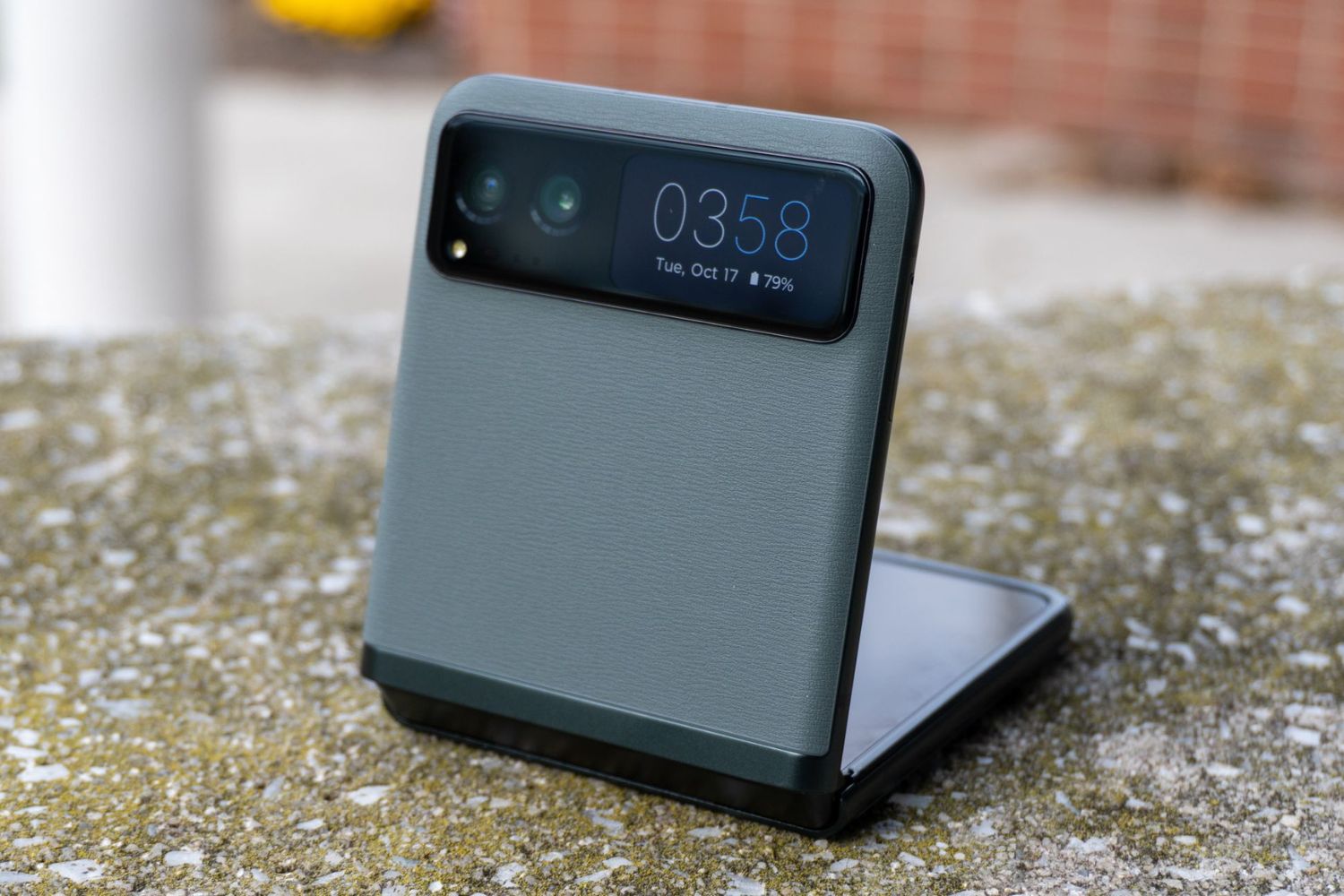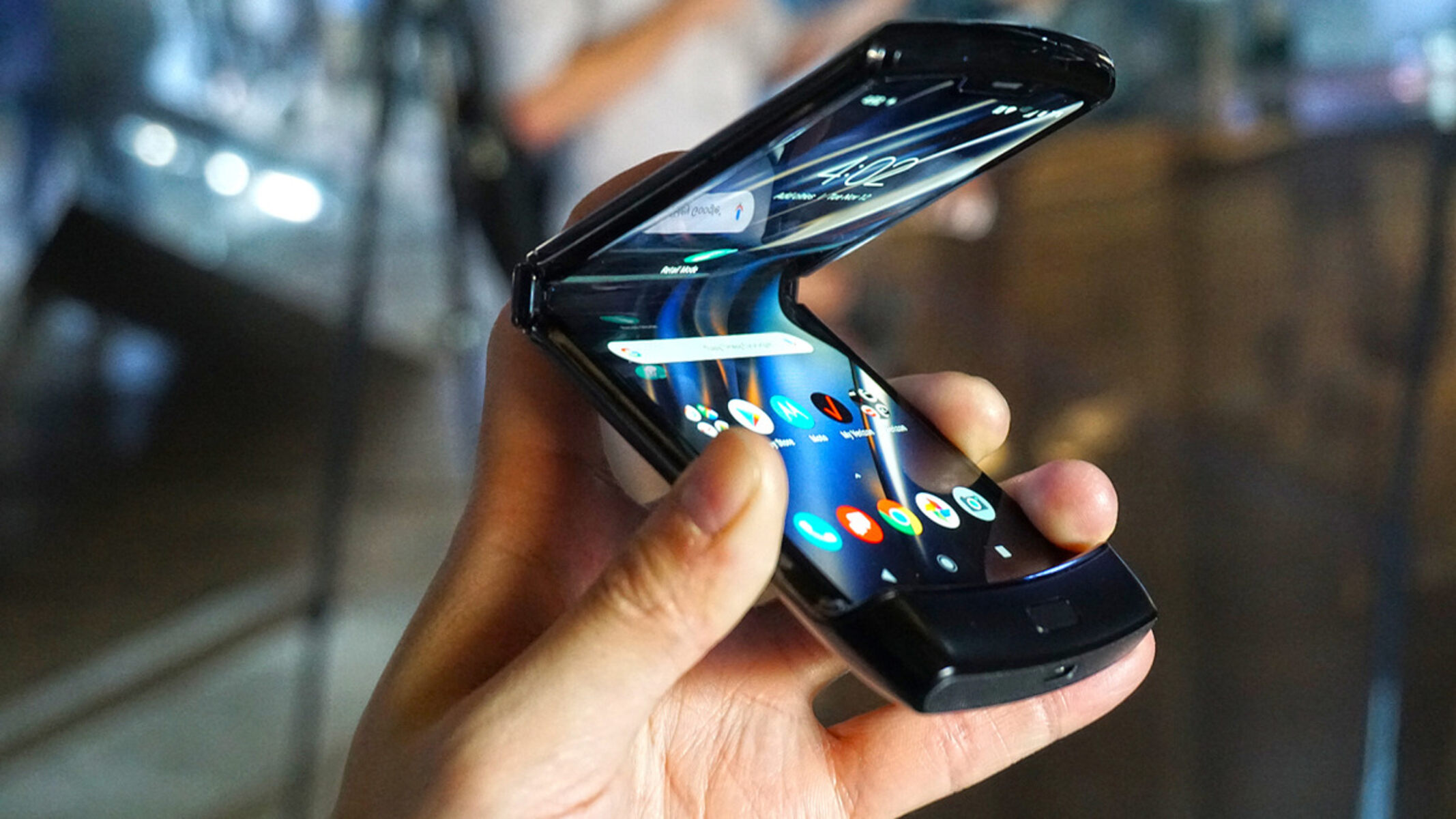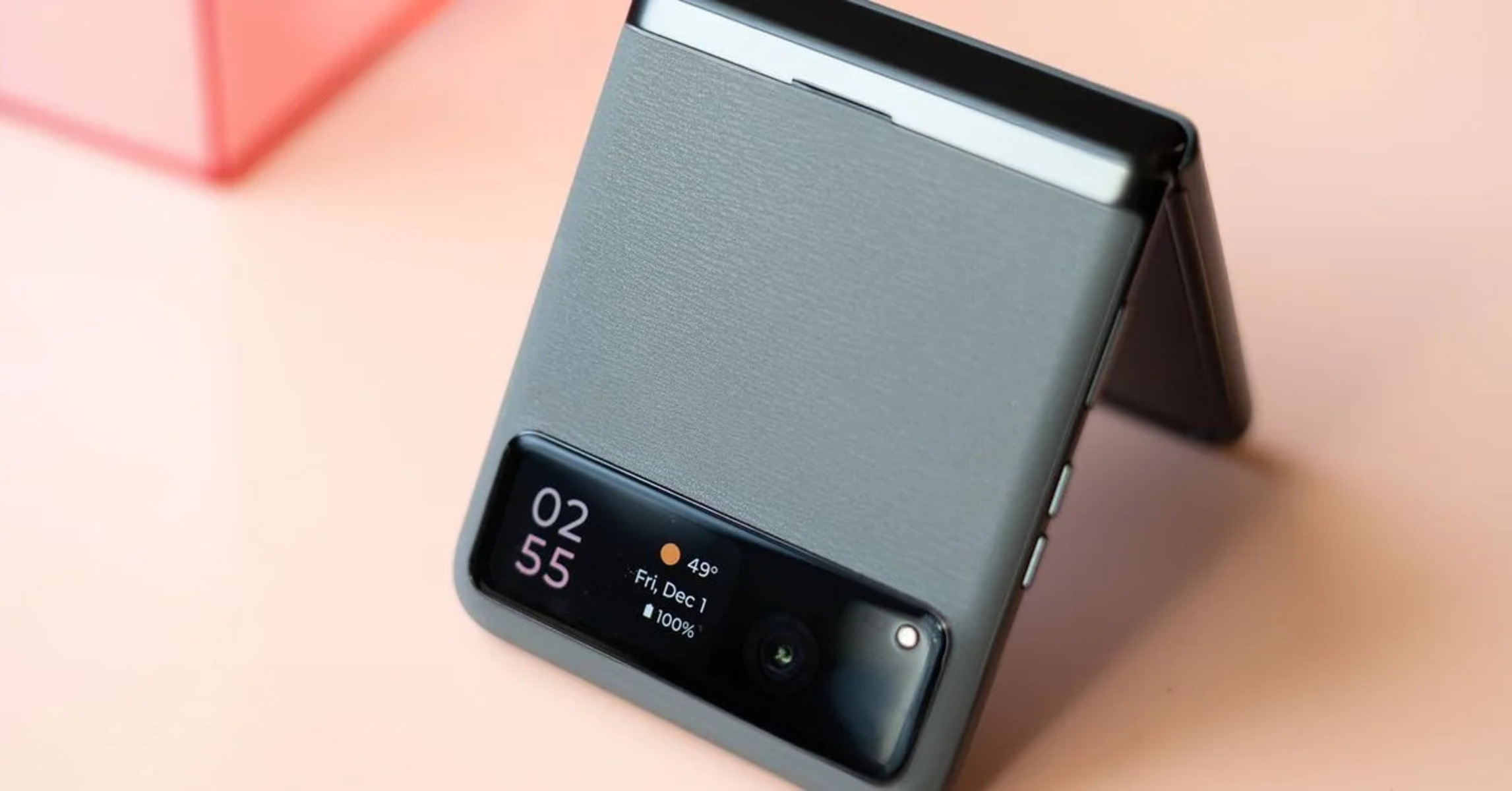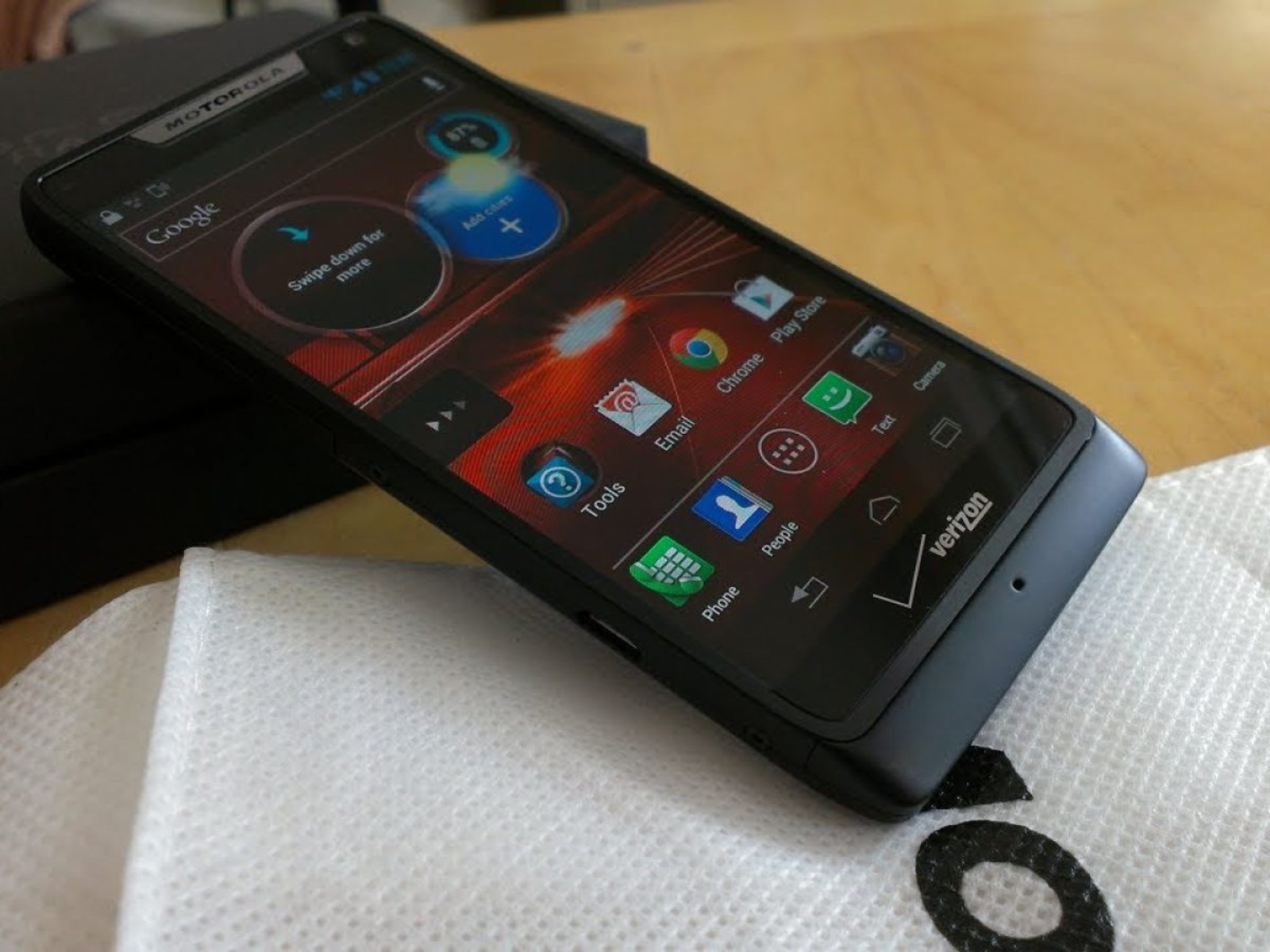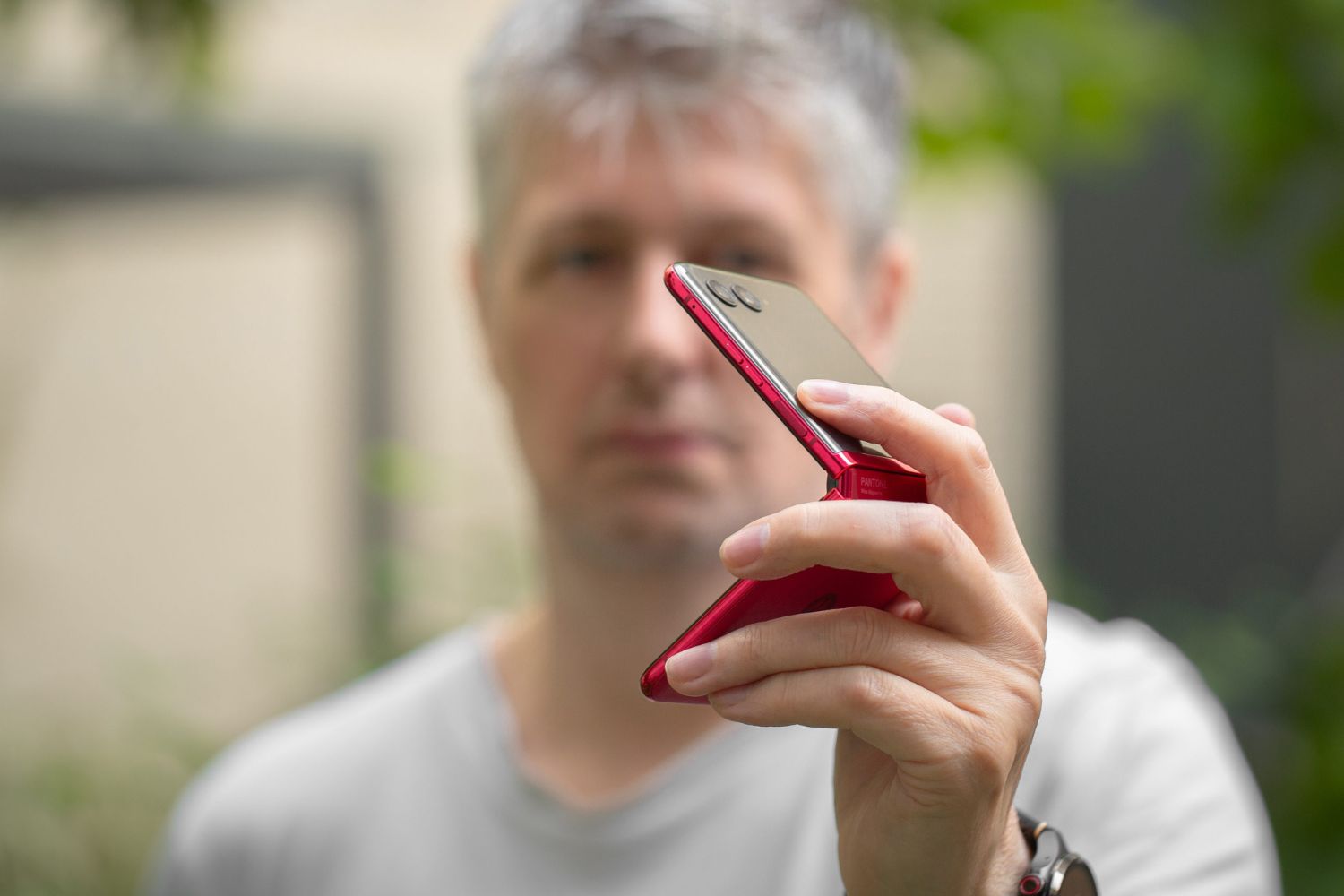Introduction
The Motorola Razr M, with its sleek design and impressive features, has been a beloved device for many users. However, encountering a fully bricked Motorola Razr M can be a frustrating experience. A fully bricked device is one that is rendered completely inoperable, often due to failed software modifications or updates. When faced with this issue, it's crucial to approach the situation with patience and a clear plan of action.
In this comprehensive guide, we will walk through the step-by-step process of reviving a fully bricked Motorola Razr M. By following these instructions carefully, you can potentially restore your device to full functionality. From assessing the damage to flashing the correct firmware, each step is designed to help you navigate the recovery process with confidence.
Whether you're a seasoned tech enthusiast or a novice user, this guide aims to provide clear and accessible instructions for resolving the issue at hand. With the right tools and a methodical approach, you can breathe new life into your Motorola Razr M and regain access to its array of features and capabilities.
So, if you find yourself facing a fully bricked Motorola Razr M, don't despair. Instead, arm yourself with the knowledge and guidance offered in this guide, and embark on the journey to restore your device to its former glory. Let's dive into the step-by-step process of fixing a fully bricked Motorola Razr M.
Step 1: Assessing the Damage
Before embarking on the journey to revive a fully bricked Motorola Razr M, it's essential to thoroughly assess the extent of the damage. A fully bricked device may exhibit a range of symptoms, such as an unresponsive screen, failure to power on, or being stuck in a boot loop. By carefully evaluating the device's behavior, you can gain valuable insights into the underlying issues and determine the appropriate course of action.
Start by attempting to power on the device. If the screen remains blank or unresponsive, it indicates a severe software malfunction. In some cases, the device may display error messages or unusual patterns during boot-up, signaling potential software corruption. Additionally, if the device is stuck in a boot loop, repeatedly attempting to start up without success, it suggests a critical software failure that requires intervention.
Furthermore, it's crucial to consider any recent modifications or updates that may have contributed to the bricking of the device. Whether it was a failed software update, a custom ROM installation, or other system alterations, understanding the context surrounding the bricking can provide valuable clues for the recovery process.
In some instances, the device may still exhibit signs of life, such as LED indicator lights or vibrating upon power-up attempts. These subtle cues can offer valuable hints about the device's underlying condition and aid in diagnosing the issue.
By carefully observing and documenting the device's behavior, you can gather essential information that will guide the subsequent steps in the recovery process. Understanding the specific symptoms and patterns exhibited by the fully bricked Motorola Razr M is a crucial first step towards devising an effective strategy for restoration.
In the following steps, we will delve into the process of gathering the necessary tools and downloading the correct firmware to initiate the recovery process. Armed with a clear assessment of the damage, you are well-equipped to proceed with confidence and determination, setting the stage for the subsequent stages of the recovery journey.
Step 2: Gathering the Necessary Tools
In the quest to revive a fully bricked Motorola Razr M, assembling the essential tools is a pivotal preparatory step. These tools will empower you to execute the subsequent stages of the recovery process with precision and effectiveness. By ensuring that you have the requisite tools at your disposal, you can navigate the restoration journey with confidence and readiness.
The following tools are indispensable for the recovery process:
-
Computer: A reliable computer with a stable internet connection is fundamental for downloading essential software and firmware, as well as for executing commands during the recovery process. Ensure that the computer is fully charged or connected to a power source to prevent interruptions during the recovery procedure.
-
USB Cable: A high-quality USB cable is essential for establishing a stable connection between the Motorola Razr M and the computer. Opt for a durable and reliable USB cable to facilitate seamless data transfer and communication between the devices.
-
Motorola Razr M: The bricked device itself is a crucial tool in the recovery process. While it may be in a non-functional state, it serves as the focal point for executing the recovery procedures outlined in the subsequent steps. Ensure that the device is adequately charged, if possible, to facilitate the recovery process.
-
ADB and Fastboot Software: Download and install the Android Debug Bridge (ADB) and Fastboot software on your computer. These tools are essential for communicating with the bricked device and executing commands to flash the firmware. ADB and Fastboot enable the transfer of files and commands between the computer and the Motorola Razr M, playing a pivotal role in the recovery process.
-
Motorola USB Drivers: Install the official Motorola USB drivers on your computer to ensure seamless connectivity between the bricked device and the computer. These drivers facilitate the recognition of the Motorola Razr M by the computer, enabling the smooth execution of recovery commands and procedures.
By gathering these essential tools, you are laying a solid foundation for the subsequent stages of the recovery process. With a computer equipped with ADB and Fastboot software, a reliable USB cable, the bricked Motorola Razr M, and the necessary USB drivers, you are poised to embark on the journey of restoring functionality to the device. These tools, when combined with the forthcoming steps, will empower you to navigate the recovery process with precision and determination, ultimately aiming to breathe new life into the fully bricked Motorola Razr M.
Step 3: Downloading the Correct Firmware
Downloading the correct firmware is a critical step in the process of reviving a fully bricked Motorola Razr M. The firmware serves as the foundational software that powers the device, and obtaining the precise version tailored to the device's specifications is essential for successful recovery. By securing the correct firmware, you can lay the groundwork for restoring the device to full functionality and addressing the issues that led to its bricked state.
To begin the process of downloading the correct firmware, it is imperative to identify the specific model and variant of the Motorola Razr M. This information is crucial for ensuring that the firmware aligns precisely with the device's hardware and software requirements. By accurately pinpointing the device's model and variant, you can narrow down the search for the appropriate firmware, minimizing the risk of compatibility issues during the recovery process.
Once the device's model and variant have been identified, proceed to reputable sources for downloading the official firmware. Motorola's official website and dedicated support portals are reliable sources for obtaining the correct firmware tailored to the Motorola Razr M. These platforms often provide comprehensive resources and tools for device recovery, including access to official firmware releases and updates.
When accessing the firmware downloads, exercise caution to select the precise version intended for the identified model and variant of the Motorola Razr M. Pay close attention to version numbers, build numbers, and any specific software modifications that may be relevant to the device. Verifying the compatibility of the firmware with the device's specifications is crucial for ensuring a seamless recovery process without encountering potential conflicts or errors.
Furthermore, prioritize the authenticity and integrity of the firmware source to mitigate the risk of downloading compromised or modified software. Official sources such as Motorola's support channels and verified third-party repositories offer a level of assurance regarding the legitimacy and reliability of the firmware downloads, safeguarding against potential security risks and software alterations.
By meticulously navigating the process of downloading the correct firmware, you are laying a solid foundation for the subsequent stages of the recovery journey. With the precise firmware in hand, tailored to the device's specifications and sourced from reputable channels, you are poised to progress to the next steps of the recovery process, equipped with the essential software required to initiate the restoration of the fully bricked Motorola Razr M.
Step 4: Installing ADB and Fastboot
Installing the Android Debug Bridge (ADB) and Fastboot software is a pivotal step in the journey to revive a fully bricked Motorola Razr M. ADB and Fastboot are essential tools that enable communication between the computer and the bricked device, facilitating the execution of commands and the flashing of firmware. By installing these software components, you establish a crucial link between the computer and the Motorola Razr M, laying the groundwork for the subsequent stages of the recovery process.
To begin, it is essential to download the ADB and Fastboot software package compatible with your computer's operating system. These tools are available for various platforms, including Windows, macOS, and Linux, ensuring broad compatibility and accessibility for users across different environments. Once the appropriate package has been obtained, proceed to install the ADB and Fastboot software on your computer, following the specific installation instructions provided for your operating system.
After the installation is complete, it is advisable to verify the proper functioning of ADB and Fastboot by executing a simple command in the command prompt or terminal. By entering the command "adb devices" (without quotes) while the bricked Motorola Razr M is connected to the computer via USB, you can confirm whether the device is successfully recognized by ADB. Similarly, the command "fastboot devices" (without quotes) can be used to verify the recognition of the device in fastboot mode.
In the event that the bricked device is detected by ADB and Fastboot, you have successfully established a functional connection between the computer and the Motorola Razr M, setting the stage for the subsequent steps in the recovery process. However, if the device is not recognized, it may be necessary to troubleshoot connectivity issues, such as installing or updating the necessary USB drivers for the Motorola Razr M on your computer.
By diligently installing and verifying the functionality of ADB and Fastboot, you are equipping yourself with the fundamental tools required to communicate with the bricked device and execute crucial commands during the recovery process. These software components serve as the bridge between the computer and the Motorola Razr M, enabling the seamless transfer of files and the execution of recovery procedures. With ADB and Fastboot in place, you are prepared to advance to the subsequent steps, poised to navigate the recovery journey with confidence and precision.
Step 5: Booting into Fastboot Mode
Booting the Motorola Razr M into Fastboot mode is a crucial step in the process of reviving a fully bricked device. Fastboot mode, also known as bootloader mode, allows for low-level interactions with the device's software, enabling the execution of essential commands for flashing the firmware and initiating the recovery process. By entering Fastboot mode, you gain access to a specialized environment that facilitates the seamless transfer of firmware and recovery commands between the computer and the bricked Motorola Razr M.
To initiate the process of booting into Fastboot mode, follow these step-by-step instructions:
-
Power Off the Device: Ensure that the Motorola Razr M is powered off completely before proceeding to the next steps. If the device is unresponsive, attempt to power it off using the designated hardware buttons or by disconnecting and reconnecting the battery, if accessible.
-
Press and Hold the Volume Down Button: With the device powered off, press and hold the Volume Down button on the Motorola Razr M. This button is typically located on the side of the device, and its precise location may vary based on the device's specific model and design.
-
Simultaneously Press the Power Button: While continuing to hold the Volume Down button, simultaneously press and hold the Power button on the device. This action triggers the initiation of Fastboot mode, preparing the Motorola Razr M to enter the specialized environment optimized for recovery procedures.
-
Observe the Fastboot Screen: As the device powers on, continue to hold the Volume Down and Power buttons until the Fastboot screen appears. This screen signifies that the Motorola Razr M has successfully entered Fastboot mode, indicating readiness for the execution of recovery commands and firmware flashing.
-
Connect the Device to the Computer: Once the device is in Fastboot mode, establish a stable connection between the Motorola Razr M and the computer using a high-quality USB cable. This connection is essential for facilitating the transfer of firmware and recovery commands between the devices, enabling seamless communication during the recovery process.
By meticulously following these steps, you can successfully boot the Motorola Razr M into Fastboot mode, setting the stage for the subsequent stages of the recovery journey. With the device poised to enter this specialized environment, you are prepared to execute crucial commands and initiate the flashing of the correct firmware, ultimately aiming to restore full functionality to the fully bricked Motorola Razr M.
Step 6: Flashing the Firmware
Flashing the firmware is a pivotal stage in the process of reviving a fully bricked Motorola Razr M, representing a critical juncture where the correct software is transferred to the device to initiate its restoration. This step involves the seamless installation of the precise firmware obtained in the earlier stages, leveraging the established connection between the computer and the Motorola Razr M to execute the flashing process with precision and care.
To commence the firmware flashing process, it is essential to navigate to the directory where the downloaded firmware is stored on the computer. Once located, proceed to open a command prompt or terminal window in the same directory to execute the necessary commands for flashing the firmware to the bricked device.
With the command prompt or terminal window open, enter the specific command to initiate the firmware flashing process. The command typically involves invoking the Fastboot utility and specifying the firmware file to be transferred to the Motorola Razr M. For example, the command may resemble the following:
fastboot flash firmware firmware_file.img
In this command, "firmware_file.img" represents the name of the firmware file to be flashed to the device. By executing this command, the Fastboot utility initiates the seamless transfer of the firmware to the Motorola Razr M, replacing the corrupted or non-functional software with the correct version tailored to the device's specifications.
As the firmware flashing process unfolds, it is crucial to monitor the command prompt or terminal window for any status updates or progress indicators. The flashing process may take several moments to complete, during which the firmware is transferred to the device and integrated into its software framework.
Upon successful completion of the firmware flashing process, the Motorola Razr M undergoes a transformative transition, as the correct software is installed, replacing the bricked state with a restored and functional system. This pivotal stage marks a significant milestone in the recovery journey, signifying the successful restoration of the device's software integrity and paving the way for the subsequent steps in the recovery process.
By meticulously executing the firmware flashing process, you are harnessing the power of precise software installation to breathe new life into the fully bricked Motorola Razr M. With the correct firmware seamlessly integrated into the device's software framework, you are poised to advance to the final stages of the recovery journey, equipped with a revitalized device ready to be rebooted and embraced once more.
Step 7: Rebooting the Device
Rebooting the Motorola Razr M represents the culminating step in the comprehensive process of reviving a fully bricked device. Following the successful flashing of the correct firmware and the restoration of the device's software integrity, rebooting the device serves as the definitive moment where the transformative effects of the recovery process come to fruition. This pivotal stage marks the transition from a bricked state to a fully functional and operational device, signifying the successful culmination of the recovery journey.
To initiate the rebooting process, it is essential to execute a controlled and deliberate restart of the Motorola Razr M, allowing the newly installed firmware to take effect and integrate seamlessly into the device's software framework. By following these step-by-step instructions, you can ensure a smooth and effective reboot, setting the stage for the device to emerge from its bricked state and re-establish its full functionality.
Commence the rebooting process by disconnecting the Motorola Razr M from the computer, ensuring that the device is no longer tethered to the USB cable. This disconnection signifies the transition to standalone operation, preparing the device for an independent restart following the completion of the firmware flashing process.
Next, proceed to power on the Motorola Razr M by pressing and holding the designated power button. As the device powers on, observe its behavior closely, paying attention to any indicators of successful rebooting, such as the display illumination, the appearance of the device's logo, or the initiation of the boot sequence.
During the reboot process, it is essential to exercise patience and allow the device sufficient time to complete the restart procedure. The newly installed firmware undergoes initialization and integration into the device's software environment, culminating in the restoration of full functionality and operational capacity.
Upon successful completion of the reboot process, the Motorola Razr M emerges from its bricked state, reinvigorated and ready to be embraced once more. The device's screen may illuminate, signaling its return to operational status, and it may display the familiar interface indicative of its restored functionality.
By meticulously executing the rebooting process, you are ushering in a new chapter for the Motorola Razr M, as it emerges from the challenges of a fully bricked state to reclaim its position as a reliable and functional device. With the successful reboot, the recovery journey reaches its pinnacle, marking the triumphant restoration of the fully bricked Motorola Razr M to its former operational glory.
Conclusion
In conclusion, the journey to revive a fully bricked Motorola Razr M encompasses a series of meticulous steps, each contributing to the overarching goal of restoring the device to full functionality. From the initial assessment of the damage to the successful rebooting of the device, every stage of the recovery process plays a pivotal role in the transformative restoration of the bricked device.
Throughout this comprehensive guide, we have navigated the intricacies of addressing a fully bricked Motorola Razr M with precision and determination. By meticulously assessing the extent of the damage and gathering the necessary tools, users are empowered to embark on the recovery journey with confidence, armed with the essential resources required to navigate the restoration process.
Downloading the correct firmware and installing ADB and Fastboot software serve as foundational steps, laying the groundwork for the subsequent stages of the recovery process. These pivotal preparatory actions set the stage for the seamless execution of firmware flashing and the initiation of the device's transformative restoration.
The process of booting into Fastboot mode and flashing the correct firmware represents critical junctures in the recovery journey, where the precise software is seamlessly integrated into the device's framework, replacing the bricked state with a revitalized and functional system. These stages embody the meticulous precision and care required to breathe new life into the fully bricked Motorola Razr M, setting the stage for the culminating moment of rebooting the device.
With the successful reboot, the fully bricked Motorola Razr M emerges from its challenges, reinvigorated and ready to be embraced once more. The device reclaims its position as a reliable and functional companion, marking the triumphant culmination of the recovery journey.
In essence, the process of reviving a fully bricked Motorola Razr M is a testament to the resilience and determination of users in overcoming technical challenges. By following the step-by-step guidance provided in this comprehensive guide, users can navigate the recovery journey with confidence, ultimately restoring the device to its former operational glory. As the fully bricked Motorola Razr M emerges from its transformative restoration, it stands as a testament to the power of precision, determination, and the unwavering spirit of technological resilience.







